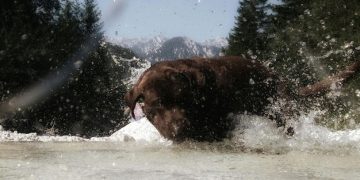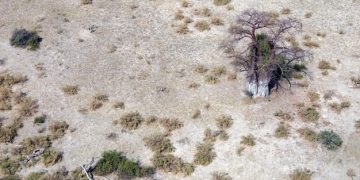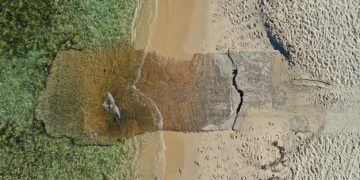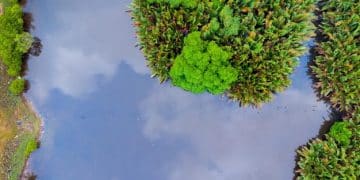Climate Change & Invasive Species: US Ecosystem Impact Unveiled
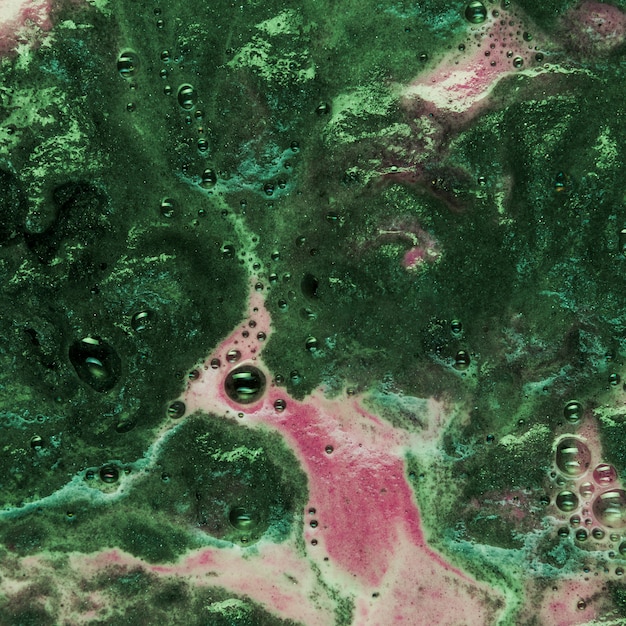
Climate change significantly amplifies the spread and impact of invasive species in US ecosystems by altering habitats, extending species ranges, and intensifying environmental stressors, creating complex challenges for biodiversity and natural resource management.
The intricate dance of nature often maintains a delicate balance, but when external forces disrupt this harmony, the consequences can be far-reaching and destructive. One such profound disruption is the increasing proliferation of invasive species across the United States. A critical question emerges from this scenario: How Does Climate Change Affect the Spread of Invasive Species in US Ecosystems? Understanding this interconnection is paramount, as it reveals a concerning feedback loop where climate shifts create ideal conditions for invaders, further jeopardizing native biodiversity and ecosystem integrity.
The Silent Invaders: Understanding Invasive Species
Invasive species, often introduced unintentionally or intentionally by human activity, pose a significant threat to global biodiversity. They are non-native organisms that cause ecological or economic harm to the environment they invade. Unlike native species, which have evolved alongside their ecosystems, invaders lack natural predators or competitors, allowing them to outcompete native flora and fauna for resources and alter habitats.
The economic toll from invasive species extends beyond ecological damage, affecting agriculture, forestry, fisheries, and public health. For instance, the emerald ash borer, an invasive beetle, has devastated ash tree populations across the Eastern and Midwestern US, costing billions in timber losses and removal efforts. Similarly, zebra mussels have clogged water pipes and altered aquatic food webs in the Great Lakes, impacting infrastructure and native fish species.
Defining “Native” versus “Invasive”
The distinction between a native and an invasive species lies in its origin and impact. A native species evolves within a particular ecosystem, playing a specific role in its food web and nutrient cycles. An invasive species, however, originates elsewhere and, upon introduction, outcompetes or displaces native species, often leading to a reduction in biodiversity and a shift in ecosystem functions.
- Native Species: Evolved in a specific region, contributing to the local ecosystem balance.
- Introduced/Non-Native Species: Brought to a new area, but may or may not cause harm.
- Invasive Species: Non-native species that cause harm to the environment, economy, or human health.
The introduction pathways for invasive species are diverse, ranging from global trade and tourism to horticulture and aquaculture. Ballast water in ships, contaminated shipping containers, and even well-intentioned pet releases contribute to their spread. Once established, eradicating or controlling invasive species is notoriously challenging, often requiring substantial resources and long-term commitment.
The ecological impacts are profound, including habitat degradation, altered fire regimes, disruption of pollination networks, and the introduction of novel diseases. These changes can cascade through an ecosystem, leading to population declines and even extinctions of vulnerable native species. Understanding these foundational aspects of invasive species is crucial before delving into how climate change exacerbates their proliferation across US ecosystems.
Climate Change as an Enabler: Altered Habitats and Range Expansion
One of the most significant ways climate change influences the spread of invasive species is by altering habitats and enabling range expansions. As global temperatures rise, precipitation patterns shift, and extreme weather events become more frequent, existing ecosystems undergo profound transformations. These changes often create conditions more favorable for invasive species, which tend to be more adaptable and opportunistic than many native species.
Warmer temperatures, for example, can extend the growing seasons in certain regions, allowing invasive plants to outcompete native vegetation that may struggle with these new conditions. Similarly, temperate zones that once experienced harsh winters providing a natural barrier against certain species may now see milder conditions, enabling tropical or subtropical invaders to survive and thrive further north. This phenomenon is particularly evident in aquatic environments, where rising water temperatures influence species distribution and reproductive cycles.
Expanding Geographic Ranges
Climate change facilitates the expansion of invasive species’ geographic ranges in several key ways. As temperatures increase, the thermal limits for many species shift, allowing those adapted to warmer climates to move into previously unsuitable areas. This is often observed with insect pests, disease vectors, and certain plant species.
- Insect Migration: Warmer winters allow insect populations, like the southern pine beetle, to survive further north, expanding their range and impacting new forest ecosystems.
- Aquatic Species Movement: Rising water temperatures in lakes and rivers can enable warm-water invasive fish species to colonize new territories, outcompeting native cold-water fish.
- Plant Colonization: Invasive plants, often characterized by rapid growth and broad environmental tolerances, exploit newly warmed areas, displacing native flora.
The alteration of existing habitats by climate change weakens native ecosystems, making them more susceptible to invasion. Droughts, floods, and increased frequency of wildfires, all exacerbated by climate change, can create disturbed landscapes. These disturbed areas are often ripe for colonization by invasive species, which are typically pioneers in disturbed environments, quickly establishing themselves before native species can recover.
Ultimately, the synergy between climate change and invasive species creates a vicious cycle. As climate change modifies ecosystems, it creates niches that invasive species are well-equipped to fill. Their establishment, in turn, can further degrade the ecosystem’s resilience to climate change impacts, exacerbating the problem and accelerating biodiversity loss. This dynamic underscores the urgent need for integrated conservation strategies that address both climate change mitigation and invasive species management.
Shifting Phenology and Reproductive Cycles
Climate change profoundly impacts the phenology—the timing of biological events—and reproductive cycles of both native and invasive species. These shifts, often occurring at different rates for different organisms, can create critical mismatches within ecosystems, disproportionately benefiting invasive species due to their inherent adaptability and generalist tendencies. Altered seasonal patterns, such as earlier springs or delayed frosts, can disrupt the synchronized life cycles that have evolved over millennia, giving invaders an edge.
Many invasive species possess “plasticity,” the ability to adjust their phenology in response to environmental cues. This allows them to capitalize on extended growing seasons, earlier thawing, or changes in precipitation. For example, an invasive plant might flower earlier than native competitors, gaining a head start in resource acquisition and seed production, or an invasive insect might have more generations per year due to warmer temperatures, leading to rapidly escalating populations.
Reproductive Advantage and Disruption
The reproductive cycles of invasive species often exhibit a robustness that native species may lack in the face of climate variability. Warmer temperatures can shorten the development time for many invasive pests, leading to faster reproduction rates and more frequent population outbreaks. This increased reproductive capacity allows them to rapidly colonize new areas and overwhelm native populations.
- Increased Life Cycles: Warmer temperatures can allow insects like the emerald ash borer to complete multiple generations in a single year, accelerating their destructive spread.
- Extended Breeding Seasons: Some invasive fish species may experience extended breeding seasons due to warmer waters, leading to higher reproductive output and competitive advantage.
- Earlier Sprouting/Flowering: Invasive plants may sprout earlier or flower for longer periods, gaining a competitive edge by accessing resources before native plants have fully emerged or are ready to photosynthesize.
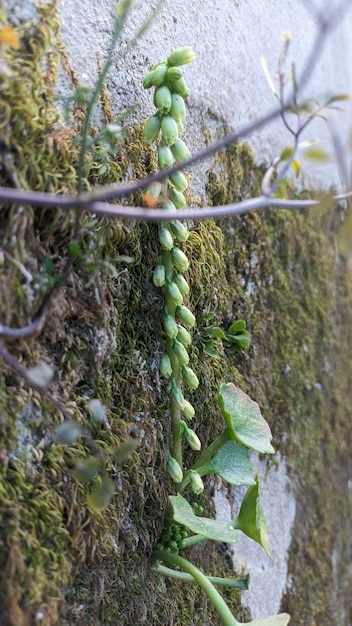
Conversely, native species, often more specialized and adapted to specific environmental cues, may suffer from these phenological shifts. If a native pollinator’s emergence is out of sync with its preferred native flower’s bloom time, both populations can suffer. Invasive species, being less selective, might exploit these mismatches, further disrupting delicate ecological balances.
These phenological shifts also influence the efficacy of control measures. If an invasive pest’s life cycle is accelerating, traditional timing for pesticide application or biological controls might become ineffective. Understanding these complex interactions is crucial for developing proactive strategies that anticipate and mitigate the synergistic effects of climate change and invasive species on native ecosystems.
Increased Frequency and Intensity of Disturbances
Climate change is unequivocally linked to an increase in the frequency and intensity of various environmental disturbances, including wildfires, droughts, floods, and severe storms. These disturbances act as critical facilitators for the spread and establishment of invasive species. Native ecosystems, especially those adapted to stable climate patterns, often struggle to recover from these extreme events, creating opportunities for resilient, opportunistic invaders to colonize and thrive.
Wildfires, a growing concern across the US, particularly in the West, exemplify this dynamic. While some ecosystems are fire-adapted, unnaturally intense and frequent fires, exacerbated by climate change, can degrade native seed banks and soil structure. Invasive annual grasses, such as cheatgrass, are notorious for colonizing burned areas rapidly. They often recover quicker than native perennials, outcompeting them for post-fire resources and, critically, providing highly flammable fuel that increases the frequency and intensity of future fires—a dangerous feedback loop.
Droughts, Floods, and Storm Surges
Beyond wildfires, other climate-induced disturbances also pave the way for invasive species:
- Droughts: Prolonged periods of low precipitation weaken native plants, making them more susceptible to pest infestations and less competitive against drought-tolerant invasive species. Droughts can also concentrate species in remaining water bodies, increasing competition and disease transmission.
- Floods: While seemingly disruptive to all species, floods can fragment habitats, create new dispersal pathways for aquatic invasives, and deposit sediments that favor certain invasive plants. They also stress native species, reducing their resilience.
- Hurricanes/Severe Storms: These events can devastate coastal ecosystems, opening up niches for salt-tolerant invasive species. Damaged infrastructure can also provide new vectors for terrestrial invasives, and severe winds can transport seeds and spores over long distances.
The cumulative effect of these disturbances is a persistent state of ecological stress. Native species, often highly specialized, struggle to adapt to the rapid succession of extreme events. Invasive species, by contrast, frequently possess traits that make them superior colonizers of disturbed land: rapid reproduction, broad environmental tolerances, and effective dispersal mechanisms. They are essentially “first responders” to ecological chaos, quickly exploiting the void left by struggling native communities.
Managing these disturbances and simultaneously controlling invasive species presents a monumental challenge. It requires a holistic approach that integrates climate resilience strategies with targeted invasive species management, aiming to bolster the health of native ecosystems so they are better equipped to withstand and recover from the impacts of a changing climate.
Impacts on US Ecosystems: Case Studies
The theoretical understanding of how climate change influences invasive species becomes starkly real when examining specific case studies across US ecosystems. From the forests of the Northeast to the deserts of the Southwest, and the aquatic environments nationwide, the negative interactions are already evident, leading to cascading ecological and economic consequences. These examples highlight the varied mechanisms through which climate change facilitates invasion and the diverse impacts that follow.
Forests Under Siege: The Southeastern US Example
The southeastern US, with its vast pine forests, faces a dual threat from climate change and invasive insects. The southern pine beetle (Dendroctonus frontalis), a native pest, is expanding its range northward and intensifying its outbreaks due to warmer winters. Historically, cold temperatures kept its populations in check, but milder winters allow more beetles to survive and reproduce. This is particularly problematic as the beetles, often stressed by drought conditions (another climate change impact), infest and kill pine trees, creating large swaths of dead timber.
These beetle outbreaks, exacerbated by climate change, weaken forests and make them more susceptible to other stressors, including invasive plants. For example, kudzu (Pueraria montana var. lobata), notorious as “the vine that ate the South,” thrives in disturbed areas. While its spread isn’t solely climate-driven, a longer growing season and increased CO2 levels can enhance its growth, allowing it to more aggressively outcompete native vegetation in weakened forest ecosystems.
Aquatic Invasions: The Great Lakes and Beyond
In aquatic systems, rising water temperatures due to climate change are proving to be a boon for many invasive species. The Great Lakes, a massive freshwater international ecosystem, are experiencing shifts in species composition. Warm-water invasive fish, such as the round goby (Neogobius melanostomus), benefit from warmer average water temperatures and extended stratified periods, which favor their reproduction and growth. This puts pressure on native cold-water fish like lake trout and whitefish, whose habitats are shrinking.
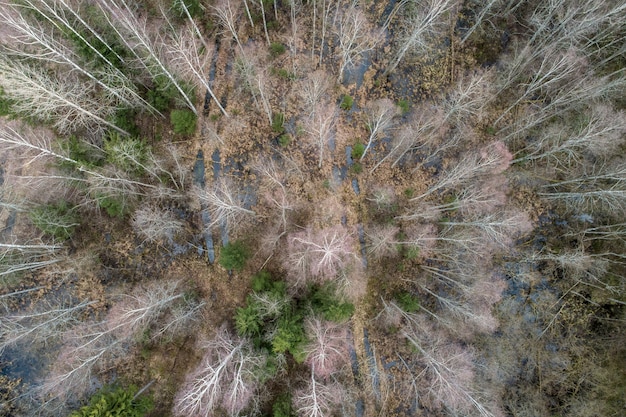
Similarly, in freshwater regions across the US, invasive aquatic plants like water hyacinth (Eichhornia crassipes) and hydrilla (Hydrilla verticillata) thrive with warmer waters and extended growing seasons. These plants form dense mats that block sunlight, reduce oxygen levels, and impede water flow, devastating native aquatic plant communities and impacting recreational activities like fishing and boating.
Western Rangelands: Cheatgrass and Fire
The interlinkage of climate change, invasive species, and disturbance is perhaps most dramatically illustrated in the western US rangelands, particularly with the proliferation of cheatgrass (Bromus tectorum). This invasive annual grass, introduced from Eurasia, germinates and grows earlier in the spring than native perennial grasses. Climate change-induced earlier springs and reduced snowpack create ideal conditions for cheatgrass to flourish, outcompeting native forage.
Crucially, cheatgrass dries out earlier in the season, providing an abundant and highly flammable fuel source for wildfires. This transforms native sagebrush ecosystems, which typically burn infrequently, into areas prone to frequent, intense fires. Each fire further reduces native species and promotes more cheatgrass, creating a destructive fire-invasion cycle that climate change accelerates. This alters entire landscapes and threatens iconic species like the greater sage-grouse, dependent on healthy sagebrush habitats.
These case studies underscore that the interaction between climate change and invasive species is not a distant threat but a current reality with tangible, devastating impacts on US ecosystems and the services they provide.
Mitigation Strategies and Adaptations
Addressing the complex intersection of climate change and invasive species requires a multi-faceted approach encompassing both mitigation strategies to slow climate change and adaptation measures to build ecosystem resilience. No single solution will suffice, but a combination of proactive management, interagency cooperation, and public engagement holds the most promise for protecting US ecosystems.
One primary strategy involves strengthening border inspections and regulatory frameworks to prevent new introductions of invasive species. While completely halting introductions is impossible in a globalized world, reducing entry points remains a critical first line of defense. This includes regulating ballast water, inspecting imported goods, and educating the public about the risks associated with transporting non-native plants and animals.
Ecosystem Restoration and Biocontrol
For areas already impacted, active restoration and innovative control methods are essential. Ecosystem restoration efforts focus on enhancing the health and resilience of native habitats, making them less hospitable to invaders. This can involve replanting native species, restoring natural hydrological regimes, and managing fire to favor native vegetation over invasives.
- Native Restoration: Reintroducing native species strengthens ecosystems against future invasions.
- Biocontrol Programs: Utilizing natural enemies (e.g., insects) to control specific invasive species, carefully vetted to ensure no harm to native species.
- Integrated Pest Management: Combining various control methods like mechanical removal, herbicides, and cultural practices to suppress invasive populations.
Adaptation strategies inherently tied to climate change mitigation are also crucial. Reducing greenhouse gas emissions is the long-term solution to slowing the rate of climate change, thereby lessening the severity of disturbances and giving ecosystems more time to adapt. On the adaptation front, land managers are increasingly focusing on “climate-smart conservation,” which involves selecting species and designing restoration projects that anticipate future climate conditions, rather than just restoring historical ones.
Furthermore, research and monitoring are vital. Understanding how specific invasive species respond to climate variables allows scientists to predict future invasion patterns and develop more targeted and effective control methods. Early detection and rapid response programs are also key; the sooner an invasion is identified, the higher the chance of successful eradication before it becomes entrenched.
Finally, public awareness and participation are indispensable. Engaged citizens can act as early detectors of new invasive species, participate in removal efforts, and adopt practices that minimize the unintentional spread of invaders, such as cleaning boats and hiking gear. Collective action, from policy-makers to individual citizens, is paramount in this ongoing battle.
The Future Outlook: Challenges and Collaborative Solutions
Looking ahead, the interplay between climate change and invasive species presents a daunting, yet not insurmountable, set of challenges for US ecosystems. The trajectory of global warming suggests that environmental stressors will continue to intensify, creating more opportunities for invasive species to establish, spread, and cause harm. However, with increased awareness, continued scientific innovation, and collaborative solutions, the impacts can be mitigated, and ecosystem resilience can be enhanced.
One of the primary challenges lies in the dynamic and unpredictable nature of both climate change and invasive species. Climate models provide projections, but local impacts can vary significantly, making precise predictions about invasion pathways difficult. Similarly, the adaptability of invasive species often means that a successful control method for one species in one region may not be effective elsewhere or against a different invader. This necessitates flexible and adaptive management approaches, constantly refining strategies based on new data and emerging threats.
Building Capacity and Fostering Partnerships
Effective management requires significant investment in research, monitoring, and on-the-ground efforts. Building capacity in terms of trained personnel, technological resources, and funding is critical. Furthermore, the transboundary nature of both climate change and invasive species means that solutions cannot be confined to state or even national borders. International cooperation and shared knowledge are essential.
- Enhanced Monitoring: Utilizing technologies like remote sensing and citizen science for early detection.
- Interagency Cooperation: Streamlining efforts between federal, state, and local agencies to create unified management plans.
- International Collaboration: Sharing best practices and research findings with global partners.
Fostering partnerships between government agencies, academic institutions, non-profit organizations, and local communities is crucial. These collaborations can leverage diverse expertise, pool resources, and ensure that management strategies are not only scientifically sound but also socially acceptable and sustainable. Indigenous knowledge, for instance, offers invaluable insights into local ecosystems and historical environmental changes.
The future outlook emphasizes the need for a shift from reactive to proactive management. Instead of merely responding to invasions, the focus must be on predicting vulnerabilities, bolstering ecosystem health, and implementing preventative measures. This includes investing in climate resilience, restoring native ecosystems, and promoting biodiversity, which inherently makes systems more resistant to invasion.
While the challenges are substantial, the collective understanding of this critical environmental nexus is growing. By integrating climate change considerations into all invasive species management plans and vice versa, managers and policymakers can create more robust, sustainable strategies for protecting the invaluable natural heritage of the United States.
| Key Factor | Brief Impact Description |
|---|---|
| 🌡️ Climate Changes | Alters habitats, extends growing seasons, and warms previously unsuitable areas, creating favorable conditions for invaders. |
| 🦋 Range Expansion | Milder winters and shifts in temperature zones allow invasive species to colonize new geographic regions. |
| ⏰ Phenology Shifts | Disrupts natural timing of ecological events, giving adaptable invaders competitive advantages over native species. |
| 🔥 Disturbance Increase | More frequent and intense wildfires, droughts, and floods weaken ecosystems, making them susceptible to invasive colonization. |
Frequently Asked Questions
▼
Invasive species are non-native organisms that cause ecological or economic harm to their new environment. They are a significant concern because they can outcompete native species, disrupt food webs, alter habitats, spread diseases, and incur billions of dollars in damage annually to agriculture, infrastructure, and public health.
▼
Climate change directly enables spread by altering environmental conditions. Warmer temperatures extend the geographic ranges of species, milder winters allow more invaders to survive, and changes in precipitation patterns create new favorable habitats. These shifts often exceed the adaptive capacity of native species but are exploited by adaptable invaders.
▼
While generally, an invasive species is non-native, climate change can cause some native species to become “overly dominant” or “nuisance” species within their own ecosystems, especially if their natural predators or competitors are severely impacted. However, they are not typically classified as “invasive” in the traditional sense, which implies a non-native origin.
▼
Coastal ecosystems, especially those in the Southeast and Gulf Coast which face rising sea levels and more intense storms, are highly vulnerable. Arid Western lands are susceptible to increased wildfires fueled by invasive grasses. Forests across the US, particularly those affected by drought and insect outbreaks, also face significant threats from invasive plants and pests.
▼
Mitigation involves reducing greenhouse gas emissions to slow climate change. Adaptation includes strengthening ecosystem resilience through native habitat restoration, implementing strong biosecurity measures to prevent new introductions, and developing early detection and rapid response programs for emerging invaders. Holistic, collaborative approaches are key.
Conclusion
The intricate relationship between climate change and the proliferation of invasive species in US ecosystems is a stark reminder of the interconnectedness of environmental challenges. Climate shifts are not merely altering weather patterns; they are fundamentally reshaping habitats, extending species ranges, and intensifying disturbances, thereby creating a landscape ripe for invasion. This dynamic feedback loop exacerbates biodiversity loss, compromises ecosystem services, and presents significant economic costs. Addressing this complex issue demands a dual approach: aggressive climate change mitigation to reduce future stressors and robust, adaptive invasive species management strategies. By investing in ecosystem resilience, fostering interagency and international collaboration, and promoting public engagement, we can strive to protect the delicate balance of US natural environments against this compounding threat, ensuring vibrant ecosystems for future generations.
